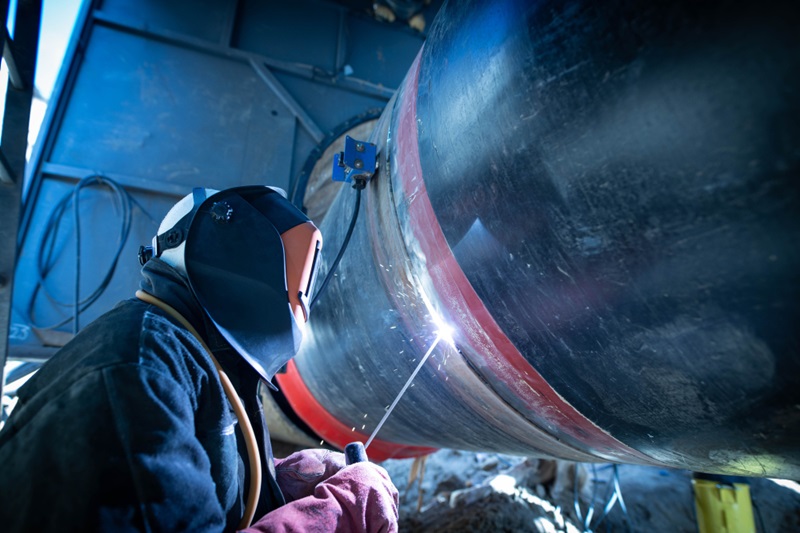 Pipe fabrication is a meticulous and intricate process that demands high precision and expertise. This is especially true when it comes to working with steel. The journey from raw material to a fully functional pipe system for steel pipe fabricators is filled with critical steps, each essential for ensuring the final product’s durability, efficiency and safety. The process involves a series of stages, from marking and cutting to welding, heat treatment, and inspection, requiring skilled professionals to execute with precision.
Pipe fabrication is a meticulous and intricate process that demands high precision and expertise. This is especially true when it comes to working with steel. The journey from raw material to a fully functional pipe system for steel pipe fabricators is filled with critical steps, each essential for ensuring the final product’s durability, efficiency and safety. The process involves a series of stages, from marking and cutting to welding, heat treatment, and inspection, requiring skilled professionals to execute with precision.
Precision Marking and Cutting
The first step for steel pipe fabricators is precision marking and cutting. This stage sets the foundation for the entire fabrication process, requiring accurate markings based on design drawings. Pipe fabricators use various methods for cutting, including gas cutting and grinding for carbon steel pipes and either grinding or flammable cutting for alloy steel pipes. The precision in this phase is crucial as it determines the quality and fit of the pipes in the assembly.
Identification Labeling
Following cutting, identification labeling is a critical step. Steel pipe fabricators transfer the pipe heat numbers to the cut sections through dye stamping, paint marking, or tagging. This step ensures traceability and quality control throughout the fabrication process, making it easier for pipe fabricators to manage the components and for inspectors to verify materials.
Finalizing Ends
The end preparation, or bevelling, comes next. Steel pipe fabricators prepare the ends of the pipes for welding, following the approved specifications and Welding Procedure Specification (WPS). This preparation is pivotal for achieving a high-quality weld, ensuring the pipes fit perfectly.
Fusion of Pipes
Welding is a critical phase where expert pipe fabricators take extra care to ensure the longitudinal seams of joining pipes do not align or intersect in a straight line in a butt-welded joint. Seams need to be spaced at least 100 mm apart and should steer clear of branch connections. It’s vital to ensure that longitudinal seams don’t sit on the steel structure.
Joining Pipes and Fixtures
In this stage, steel pipe fabricators assemble pipes and fittings on a temporary bed, ensuring a proper fit before welding. Certified welders inspect the arrangement for quality fit-up, and upon passing inspection, they weld the joints. This step is crucial for the structural integrity of the pipeline system.
Elaborate Marking Procedures
After welding, steel pipe fabricators carry out elaborate marking procedures, detailing pipeline numbers, component heat numbers, and welding dates near the joints. For future reference and maintenance, ensuring accountability and traceability, it’s crucial to have this information for every piece of the fabricated pipe. Fabricators use a paint marker to mark the pipe spool number, and attach an aluminum tag to the spool.
Thermal Processing
Thermal processing, including preheating and Post Weld Heat Treatment (PWHT), is conducted based on project requirements. Pipe fabricators perform these treatments to enhance the mechanical properties of the welds and the adjacent areas, ensuring the pipeline’s durability and resistance to stress. Preheating and PWHT are done either in the shop or on-site, as per project needs. Following fabrication, pipe spools move from the workshop to the designated laydown region.
Quality Assurance Check – How Steel Pipe Fabricators Ensure Quality
Non-Destructive Testing (NDT) is carried out to ensure the integrity of the welds. Steel pipe fabricators adhere to strict project specifications or guidelines during this phase. Spools that pass the NDT are approved for further processing, while those that fail are marked for repair. This quality assurance check is essential for maintaining the pipeline’s safety and reliability.
Record-Keeping
Record-keeping is an essential part of the pipe fabrication process. Steel pipe fabricators document each step of the process, from quality control inspections to the final painting inspection. This documentation ensures that every aspect of the fabrication process meets the approved standards and specifications before erecting the spool.
Crafting Steel Pipes
The final step involves moving the fabricated pipe spools from the shop to the laydown area, ready for installation. This stage marks the culmination of the pipe fabrication process, showcasing the skill and precision of steel pipe fabricators in transforming raw materials into critical components of industrial infrastructure.
Upgrade Projects with Expert Steel Pipe Fabrication
Elevate your industrial projects with International Pipe, where expert steel pipe fabricators bring precision and quality to every pipeline. Trust us for unparalleled expertise in steel pipe fabrication, ensuring durability and efficiency. Ready to transform your project’s infrastructure? Contact us today and see the difference true craftsmanship makes. Let’s build the future, one pipe at a time.
